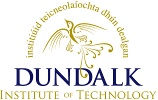Alkawadri, Tuleen (2022) Mechanisms underlying cholinergic contractions of airway smooth muscle and their regulation by beta-adrenoreceptor agonists. Doctoral thesis, Dundalk Institute of Technology.
|
PDF (Tuleen Alkawadri PhD Thesis)
- Submitted Version
Restricted to Registered users only until 1 March 2027. Download (28MB) | Request a copy |
Abstract
Muscarinic (MR) antagonists and b-adrenoreceptor (b-AR) agonists are the most commonly used bronchodilators in COPD and asthma. The reversal of bronchoconstriction by muscarinic antagonists is thought to be mediated by their action on M3R, and not M2Rs. Despite the prevalence of M2Rs in the airways, their exact contribution to cholinergic contractions remains elusive, however, several studies indicated that knockout of both M2R and M3R is required to abolish cholinergic responses. Activation of M2Rs has also been shown to offset cAMP-dependent relaxations by supressing AC activity, whereas beta-AR agonists activate AC which ultimately leads to airway smooth muscle (ASM) relaxation. The primary aim of this study was to examine the contribution of post-junctional M2Rs to cholinergic contractions of ASM and to determine if these responses are modulated by beta-AR agonists. Isometric tension recordings were performed on murine bronchial rings and intracellular Ca2+ levels were recorded from isolated ASM cells using confocal microscopy. The main findings of the present study were as follows: 1) A reduction of stimulus interval increased the amplitude of EFS-evoked contractions of ASM. This effect was apparent at a stimulus frequency of 2 Hz but not 20 Hz; 2) This potentiation was mediated by M2Rs as it was prevented by the M2R antagonists methoctramine and AFDX116 and was absent in M2R KO mice; 3) Methoctramine inhibited cholinergic contractions evoked by low concentrations of carbachol (CCh) suggesting that these responses also involve M2Rs; 4) The beta1-AR agonist denopamine mimicked the effects of the M2R antagonists methoctramine and AFDX116 and was less effective in M2R KO mice, suggesting that it exerts part of its effect by inhibiting M2R-dependent responses; 5) M2R-dependent responses involve Ca2+ influx via voltage- dependent calcium channels (VDCC) and can be regulated by modulation of K+ channels and calcium activated chloride channels (CaCC). This study provides evidence of a novel and profound M2R-mediated hypersensitisation of M3R-dependent contractions of ASM, evident at low stimulus frequencies and intervals. We speculate that this occurs via stimulation of extra-junctional M2Rs through overspill of subthreshold ACh concentrations is the likely cause of this phenomena. Therefore, a small increase in ambient ACh concentration in the airways could be a causative factor in the generation of airway hyperresponsiveness in diseases such as asthma and COPD.
| Item Type: | Thesis (Doctoral) |
|---|---|
| Subjects: | Science > Biology |
| Research Centres: | UNSPECIFIED |
| Depositing User: | Gerard Sergeant |
| Date Deposited: | 22 Mar 2022 11:44 |
| Last Modified: | 22 Mar 2022 11:44 |
| License: | Creative Commons: Attribution-Noncommercial-Share Alike 4.0 |
| URI: | https://eprints.dkit.ie/id/eprint/779 |
Actions (login required)
 |
View Item |
Downloads
Downloads per month over past year

